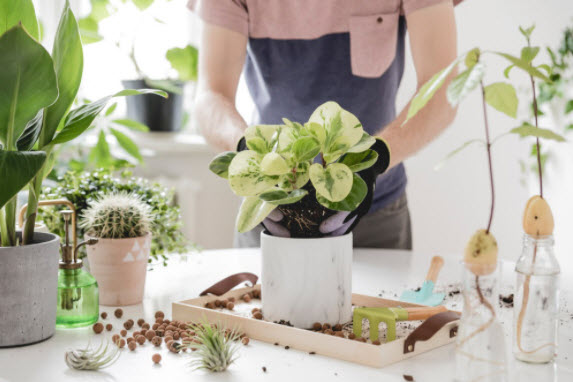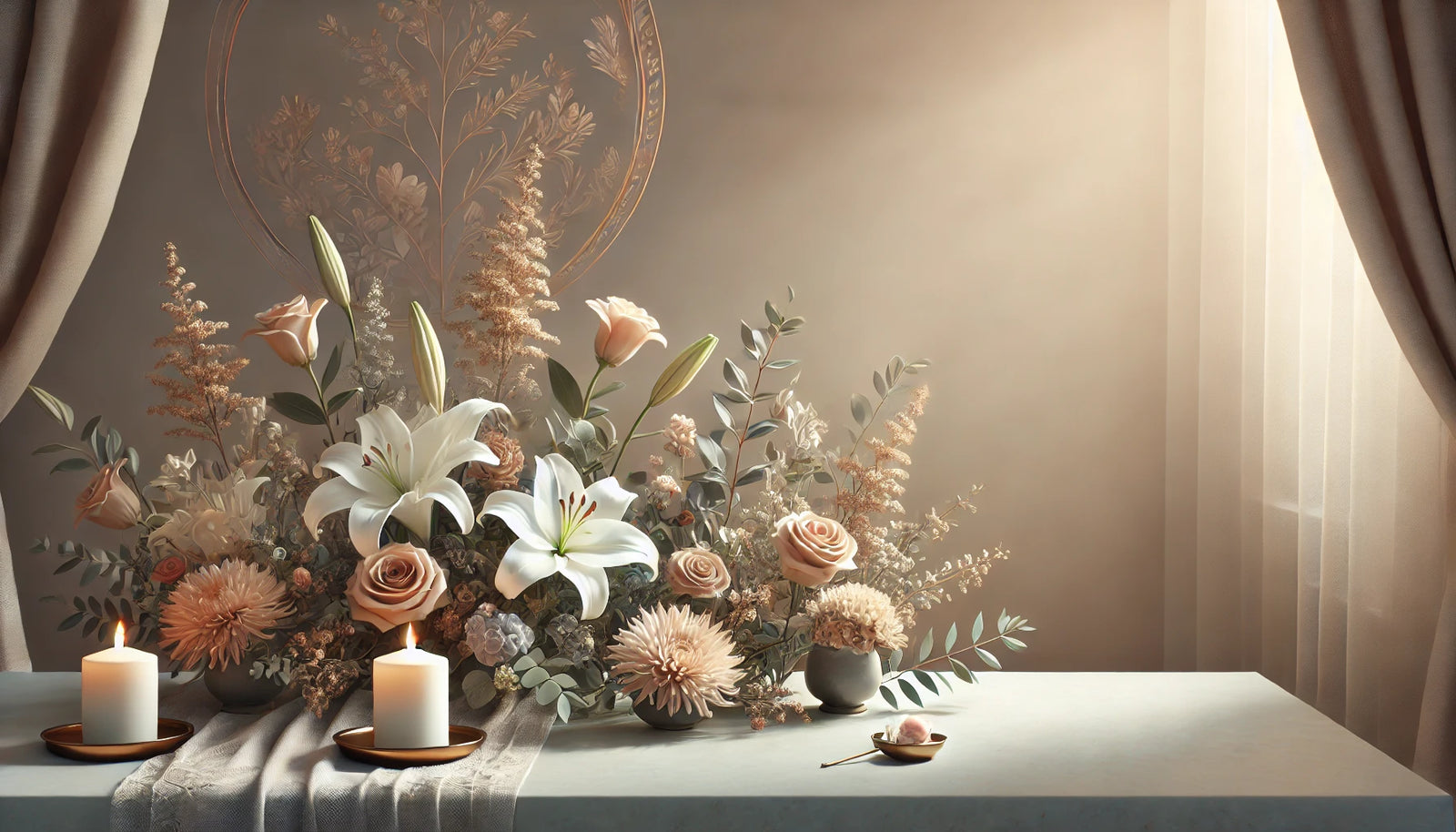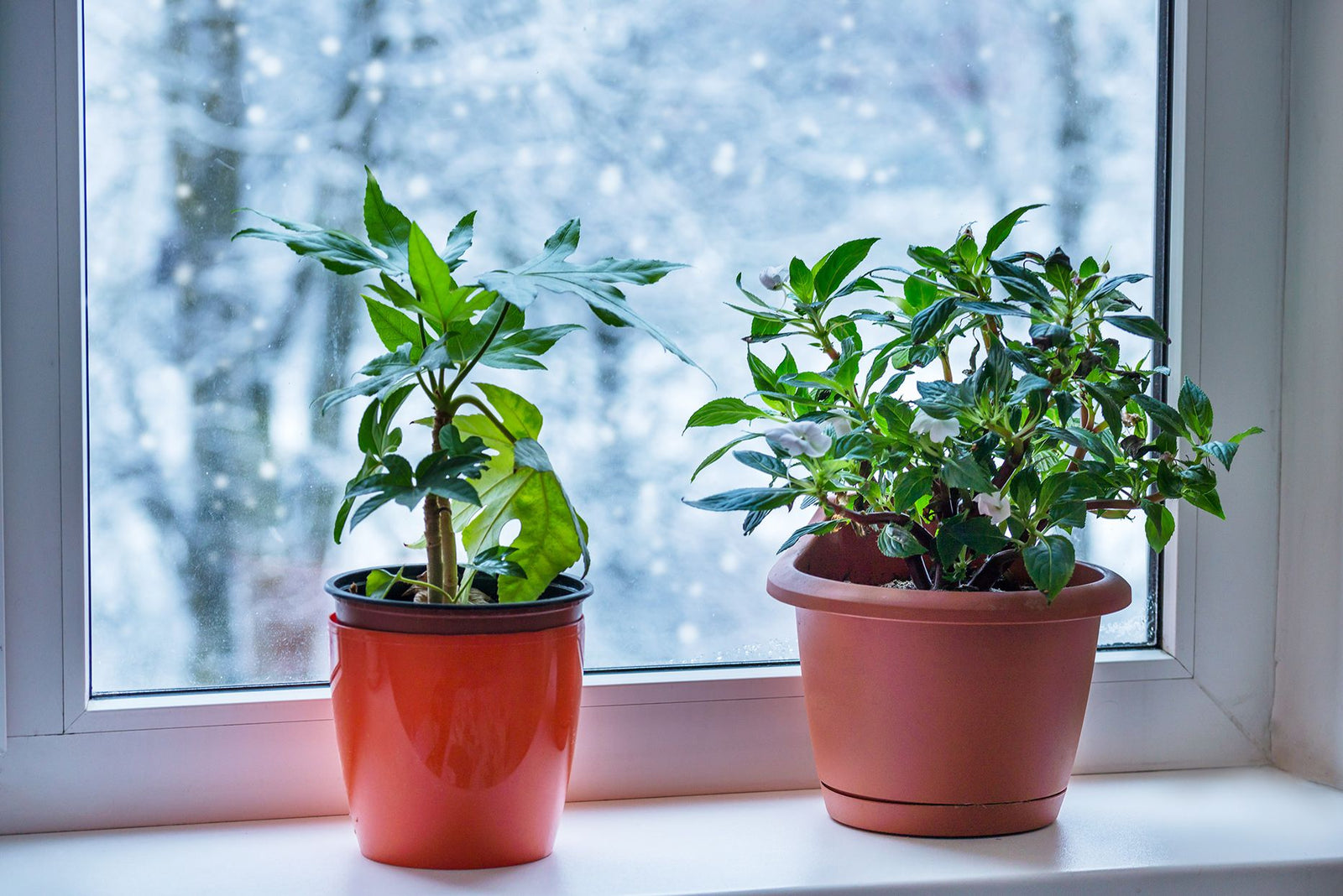If you’re new to taking care of indoor plants, we’re here to help you nurture your plants that will thrive rather than just survive in your home. Every type of plant is different and has different needs as you would expect, but it’s good to educate yourself on how to best support their growth with basic care tips. For instructions on how to water your plants, where to display them, and everything else in between, keep reading our essential house plant care guide.
When you’re shopping for a house plant, you’ll generally want to choose one that is suitable for indoor conditions. Indoor plants will usually be ones that love warmth. Some common plant types you can choose from are peace lilies, orchids, rubber tree plants, Calathea rufibarba, monsteras, philodendrons, succulents, cacti, and terrariums. There are so many more plants you can grow as an indoor plant but make sure you do your research before you choose one to see how much maintenance they need and whether you have the right conditions to keep one.
How to care for indoor plants
While we can’t cover care tips for every kind of plant, here are the main ones you should know. Doing a bit of extra research on your particular plant will also be very useful.

How to water your house plants
Knowing when and how much water to give your plant can be difficult, which is why you can check your plant with our following tips:
- Feel the soil - if you’re unsure whether your plant is thirsty, check if the first inch of soil is dry. If it is, you can go ahead and water it. If it’s already damp, it probably doesn’t need more water.
- Look at the colour of the leaves - dry or discoloured leaves are a good indication that your plant needs some extra water.
- Water deeply and not too often - watering just the surface of the soil is not effective because only the top roots will be able to drink up the water. To water more deeply, give your plants a generous amount, and do it slowly, stop when you see that the soil is not draining through anymore.
- Underwatering is better than overwatering - it’s harder to reverse the effects of overwatered plants than it is to give them more water so if you’re unsure, just give them a reasonable amount of water.
- Skip on the fertiliser if it’s not needed - most plants don’t need fertiliser unless they’re struggling to grow so don’t worry about it if you’re unsure.
Putting your plant in the right environment
Choosing the right spot in your home for your plant is more important than you might think. Factors like humidity, sunlight, and temperature are all factors that you need to consider.
- Pick a spot and stick with it - plants like stability and will survive better if you don’t move them around too much, so choose an optimal location and keep them there.
- Choose an environment with stable temperature - fluctuating temperatures can shock your plant and disrupt their growth so try to select a location that remains at a comfortable temperature for us (because plants like the same temperature we do).
- Make sure there is adequate sunlight - low-light plants will do well with even just a bit of indirect light while others will need a lot of it. Just avoid putting your plant in sunlight that is considerably hot (especially in summer, you might need to find a new spot for your plant).
- Buy a humidifier or put your plant in the bathroom every so often - the shower can provide some much-needed humidity for plants that don’t require much water.
Choosing a pot for your house plant
When searching for the perfect plant pot, choose something that matches your plant, your style, your home aesthetic, and consider functionality too.
- Make sure your pot is big enough to house your plant - pick a pot that is large enough for your plant to grow in, otherwise the roots won’t have room to expand. Generally, a pot that is 1-2 inches larger (in diameter) is a good rule to follow.
- Choose a pot with drainage holes - pots without drainage holes can cause suffocation from excessive water or inadequate air. You should probably use a saucer underneath if you’re worried about water leaking onto your floors.
Plant maintenance
- Dust off your plants or give their leaves a wipe every so often - if dust collects on your plant’s leaves, it can hinder their ability to absorb sunlight so make sure to clean them at least a few times a year.
- If you see dying leaves or the tips of your leaves getting brown, give it a prune or trim to encourage growth.
Terrariums
If you have a terrarium, they’re pretty low maintenance plants. Follow these care tips for a lush, green terrarium.
- Keep your terrarium out of direct sunlight and place them in an area with indirect light instead.
- Water your terrarium with a spray bottle.
- Keep away from heat sources.
- Give your terrarium plants a trim every so often so they don’t get crowded and overgrown.
- Clean the glass of your terrarium when it looks dirty so that light can penetrate through the glass. Use non-harsh products so as not to harm your plants.
- If you see any dead or diseased plants, remove them as soon as possible so they don’t infect the rest of your terrarium.
Shop indoor house plants for yourself or someone special
Thinking about getting your first house plant? Or maybe you know someone who would love an indoor plant? Whatever reason you need a plant for, Mordialloc Florist™ is where you can shop for a wide range of lush green plants and terrariums. There’s something there for everyone, whether you’re looking for an easy maintenance plant or something that will challenge your horticulture skills.





